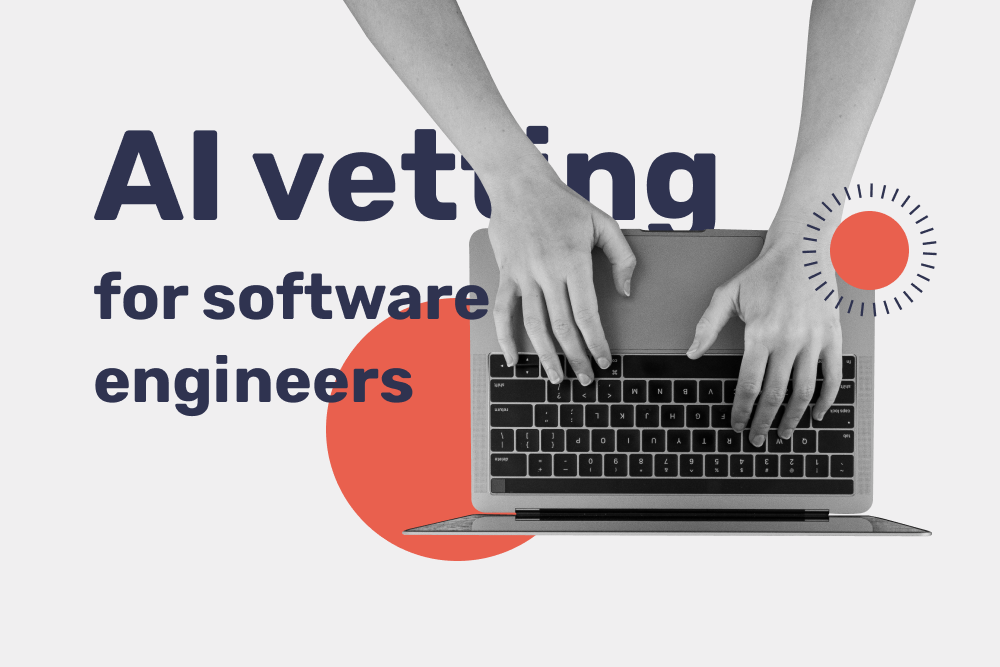Shortly after recovering from the shock and excitement caused by the ChatGPT release, the world welcomes GPT-4, the most advanced language model that promises to make the bot even smarter. According to OpenAI research, GPT-4 is considered more reliable, creative, and able to handle more complex tasks (including acceptance of the image input) than the previous version. For instance, GPT-4 scored in the top 10% for the simulated bar exam, while GPT-3.5 was in the bottom 10% of human test takers. Just have a look at how GPT-4 turned a picture of a napkin sketch into a functioning website. The idea of AI replacing programmers doesn’t seem ridiculous anymore, right?
With an aim to improve people’s lives or, as OpenAI claims, “ensure that artificial general intelligence benefits all of humanity”, GPT-4 penetrates into various industries including finance, education, customer service, recruitment, programming, and more. Although being released in March 2023, GPT-4 already powers a world-known language-learning app Duolingo and a payment processing platform Stripe.
Demonstrating impressive capabilities in coding, GPT-4 became a hot topic in the IT community and software engineers start worrying whether GPT-4 will replace them. At the same time, company owners begin to hesitate about what to invest in ‒ qualified developers or the latest AI tools.
So, will ChatGPT replace programmers? At Bridge, we decided to find out and did our own research. Keep reading to learn how ChatGPT can be used for programming tasks and what limitations it comes with.
GPT-4 in software development: most popular use cases
Although it’s unlikely that GPT wins the battle named ChatGPT vs programmers, this AI-powered tool can significantly speed up the coding process, freeing developers for higher-level coding tasks. For a better understanding, here are some examples of using ChatGPT for programming.
Code generation and completion
GPT-4 can be used for coding in the most popular programming languages, including JavaScript, PHP, Python, and more. Apart from writing simple pieces of code and automating repetitive programming tasks, you can even create mini-games like Snake or Pong. Besides, GPT-4 is able to improve the code, rewrite, modify, or insert some details into it saving much time and effort. However, don’t hold too much hope for it ‒ you won’t get an ideally polished and optimized code you can immediately push live. But the more details you provide in a prompt, the more accurate results you get.
Bug fixing
Whether you need to fix an error in Python code, identify memory leaks in C# programs, or simply check a new piece of code for possible bugs, GPT-4 can help with completing these tasks, eliminating the need to rack your brain on why the code doesn’t work as expected. Besides, the tool explains all code issues suggesting a correct variant. This way AI helps engineers define the root cause of the problem faster and highlights issues that might be missed by a human.
Here’s an example of fixing syntax errors in Python code using GPT-4.
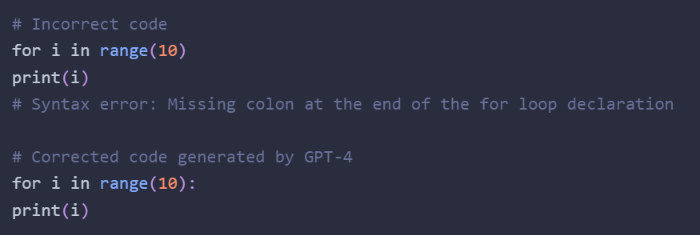
Code translation
Apart from using ChatGPT to write code, it can also help translate it from one programming language to another. It is particularly useful when you want to test how the code runs in another language or use it in another project. However, just like with any task performed with ChatGPT, a developer should manually check the quality of the translated code and ensure its accuracy and maintainability.
To illustrate this use case, we asked ChatGPT to give an example of when Java code is translated into Python. Here is what we got:
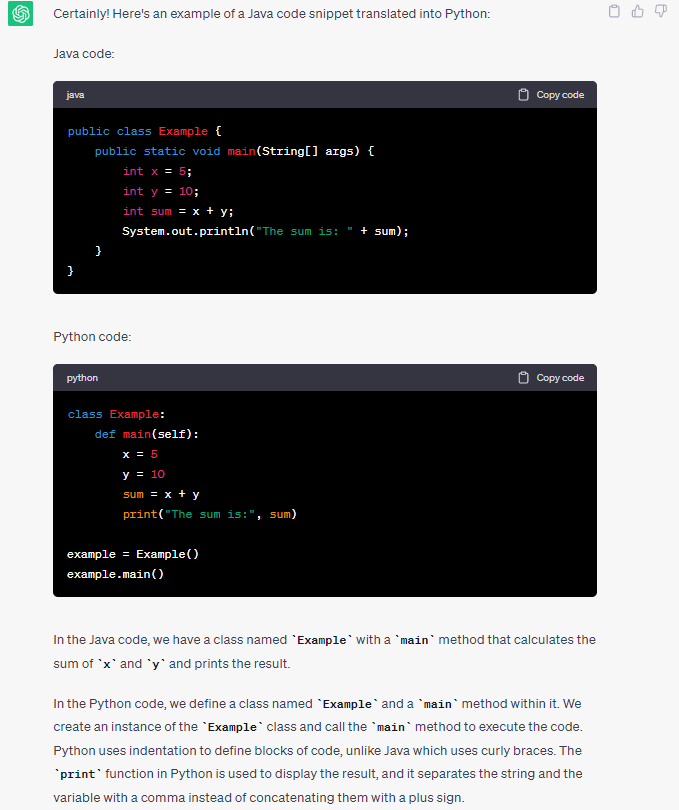
Comparing tech stack
Choosing a tech stack for a project is a tedious and time-consuming process that involves evaluating programming languages, software tools, frameworks, adaptability, limitations, and more. Fortunately, you can ask the bot to assist you and help choose between various technologies and languages. It does tremendous work analyzing the suitability of the tech stack for a specific project, saving tons of time.
Here is an example of how GPT helped pick between React and Angular. Have a look at a prompt:

And this is a response for React:
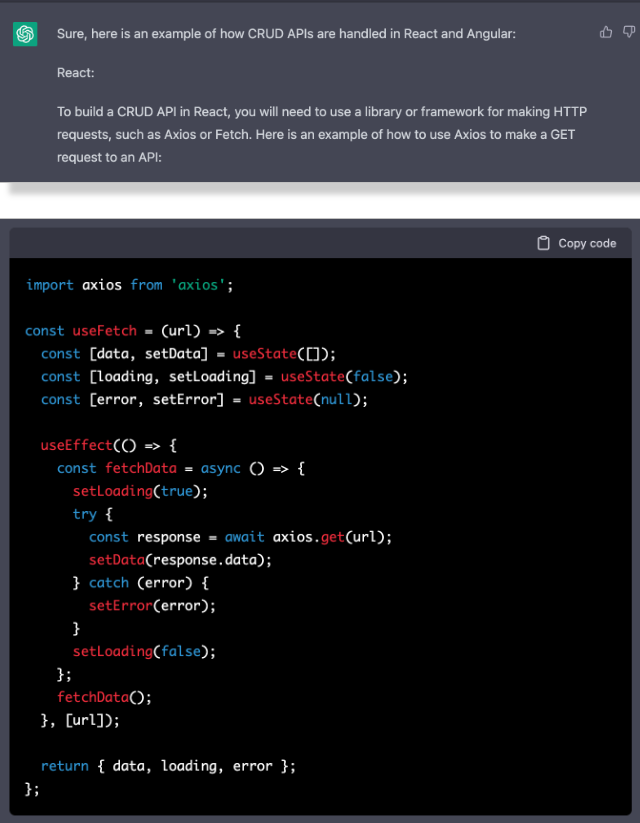
And for Angular:
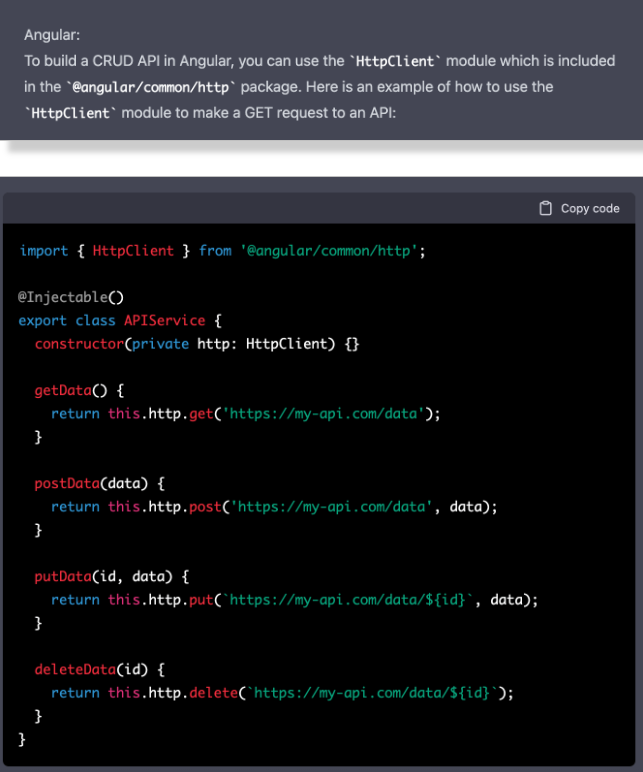
Automated testing
GPT can save time and reduce the risk of human error when used in software testing. For example, the tool can assist QA specialists with building automated test cases for various scenarios, generating test plans, creating test scripts in different languages, writing positive and negative test scenarios, and more. Utilizing GPT-4 in software testing helps enhance and simplify the testing process while achieving higher quality and increased accuracy.
Here is an example of generating an automated test case for a Java application.
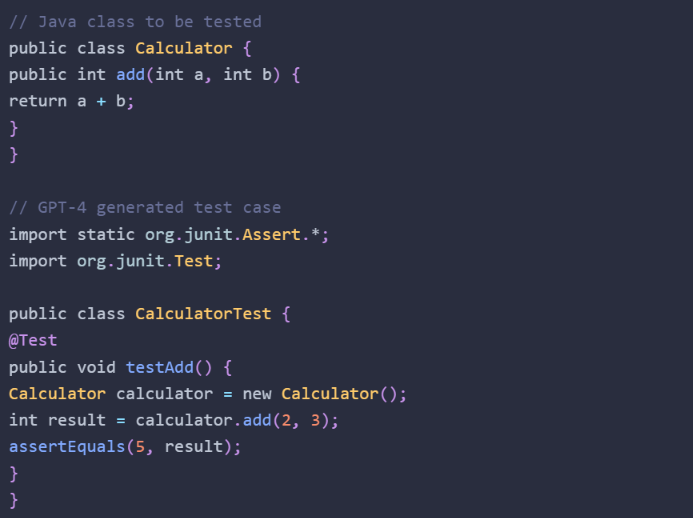
Although we can’t deny the significant benefits of GPT-4, like faster development process, enhanced efficiency and productivity, increased accuracy, and more, it can’t compete with qualified engineers. Here’s why.
Not almighty still. Limitations of GPT-4
Putting the wow effect aside, ChatGPT comes with a number of limitations that might influence the quality of results. Let’s look at some of them.
- Lack of domain-specific knowledge
Though GPT-4 generates responses based on large amounts of data from the Internet, it doesn’t have deep expertise in specific programming languages, frameworks, or industry-specific practices. So when you have a complex project that requires an expertise of a senior developer, ChatGPT won’t help, as it wasn’t trained for tasks that go beyond simple programming.
- Need for pre-training
Since GPT-4 was trained on web data available before September 2021, its responses are based on limited knowledge. As a result, when it comes to specific more modern cases, the tool often lacks accuracy and requires additional training. For example, when asked to write code, it relies on the most seen matching pieces of code, which are at least two years old at this point. If you want to make the response up-to-date, specify it in the prompt, but mind that GPT has no idea of technologies that appeared after 2021.
- Lack of creativity
Unlike humans, soft skills and creative thinking are not in ChatGPT’s CV. That’s why the tool would be the last candidate to refer to when you have tasks that require thinking outside the box.
- Security and privacy issues
Last but not least, being an AI tool, ChatGPT can’t guarantee bulletproof security of the code it created. As a consequence, the AI-generated code might contain vulnerabilities, such as SQL injection or buffer overflow, which could pose security risks if not thoroughly reviewed and validated by human programmers.
GPT-4 and human collaboration
Despite the limitations mentioned, GPT is created to make people’s life easier, and it actually does. When being able to carefully consider privacy, security, ethical and other concerns, developers and business owners can significantly optimize development operations and enhance productivity with GPT-4.
When integrating GPT-4 into the workflow, it’s essential to implement mechanisms that mitigate bias in responses, like using additional tools that detect biased content or engaging a human expert to double-check the results provided by ChatGPT. It’s also important to have data privacy specialists in place to ensure data encryption and regular security audits.
GPT-4 won’t replace skilled programmers. Just like it won’t replace skilled sourcers
While ChatGPT is a powerful tool that streamlines the coders’ workflow, it is still incapable of replacing them entirely. Of course, it can help with certain coding tasks, like writing boilerplate code or code documentation, but it can’t substitute a well-skilled programmer with rich expertise in the field. So, will AI replace software engineers? Low-skilled ones ‒ maybe, but definitely not good ones.
Now, here’s a question: how can you find and attract gifted developers for your project? This is where Bridge can help. We have a team of tech-savvy sourcers with years of experience. We can seamlessly integrate into your workflow and ensure you get maximum control over the hiring process. You personally communicate with candidates to make the final choice, while we cover paperwork, team setup, and payroll operations.
When choosing our sourcing-as-a-service, you will get a list of viable candidates for potential hires. With our proprietary data engine, the outreach process is five times faster and you begin getting the first candidates within three working days, while paying a monthly fee that is a fraction of what a full-time sourcer or recruiter would cost.
Partner with Bridge to hire the best talent globally.


